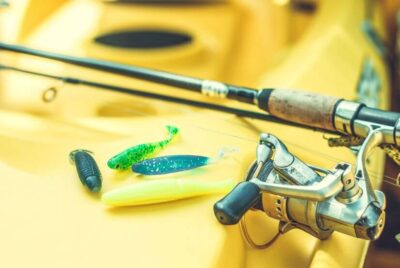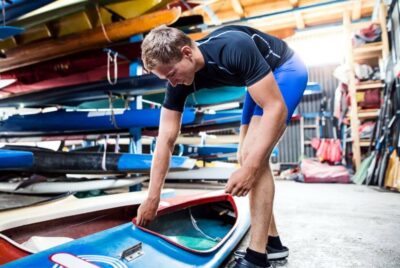Kayak Lights: Illuminate Your Paddling Adventures
There’s something magical about gliding over the water in a kayak, especially when the world is bathed in the soft glow of evening or the still darkness of pre-dawn. But as enchanting as nighttime kayaking can be, it’s essential to be equipped with the right gear, like kayak lights, to make the experience safe and enjoyable.
What Are Kayak Lights?
Kayak lights are specialized lighting systems designed specifically for kayaks and other watercraft. These lights help you see your surroundings in low light conditions and ensure that other boaters and watercraft can spot you, preventing potential accidents. Whether they’re mounted, floating, or worn, kayak lights are an indispensable accessory for those seeking nocturnal water adventures.
Why Kayak Lights Are Essential
If you’re an avid kayaker, you may have entertained the idea of paddling under the moonlight or the soft rays of the setting sun. As poetic as this might sound, kayaking without adequate lighting isn’t just risky; it can be downright dangerous. This is where kayak lights come into play as an essential component of your kayaking gear.
Benefits of Kayaking at Night
Kayaking at night offers an experience that is dramatically different from daytime paddling. Imagine the calm and serenity of the water at night, the unique perspective of wildlife, and the stunning view of the stars and moon reflected on the water’s surface. Ah, magical, isn’t it? But to make these special moments happen, you’ll need lights to guide your way.
- Enhanced Experience: Nighttime kayaking takes the experience to a whole new level. From the bioluminescent organisms that might light up your path in specific locations to the peace and solitude you can find on the water, paddling at night has its unique charm.
- Wildlife Encounters: Many water creatures are nocturnal, and kayaking at night increases your chances of spotting them. Imagine seeing a school of fish illuminating your path or watching an owl swoop down to skim the water’s surface.
- Avoiding the Crowds: Let’s face it, popular kayaking spots can get crowded during the day. But once the sun sets, most people head home. This leaves you with an open, peaceful waterway to explore at your leisure.

Types of Kayak Lights
Navigating the sea of options when it comes to kayak lights can be overwhelming. Fear not! I’m here to guide you through the basics. There are generally three main types of kayak lights to consider: mounted LED lights, floating lights, and waterproof headlamps. Each has its pros and cons, and the best option for you depends on your specific needs.
Mounted LED Lights
Mounted LED lights are high-intensity lights that are affixed to your kayak. These are usually attached to the front (bow) or back (stern) and are designed to make your vessel visible to others and to light your way.
Pros:
- High Visibility: Extremely effective in making you visible to other boaters and watercraft, sometimes from over a mile away.
- Long Battery Life: LED lights are known for their energy efficiency, meaning you won’t have to worry about changing batteries often.
- Durable: These are often built to withstand the elements, providing a long-lasting solution.
Cons:
- Installation: Can be more labor-intensive to install, sometimes requiring drilling or complicated mounting systems.
- Price: Generally more expensive than other types of kayak lights.
Ideal Use: Perfect for those who regularly kayak in areas with a lot of boat traffic or for those who are going on long nighttime excursions.

Floating Lights
Floating lights are portable, waterproof lights that float on the water’s surface. They’re often attached to a tether to keep them near your kayak.
Pros:
- Easy Installation: Virtually no setup required; just toss them into the water.
- Ambient Lighting: Provides a softer, ambient light around your kayak.
- Flexible: Easy to move around and reposition.
Cons:
- Limited Range: Generally, these won’t illuminate as far or as brightly as mounted LEDs.
- Possible Drift: If not properly tethered, they could float away, especially in fast-moving waters.
Ideal Use: Best for calm waters and short trips, especially where the main goal is ambient lighting for leisurely paddling or fishing.

Waterproof Headlamps
A headlamp designed specifically for water use, or a general-purpose one that is sufficiently waterproof, worn on your head to light the way.
Pros:
- Hands-Free: Keeps your hands available for paddling or other tasks.
- Portable: Easy to put on and take off; you can also use it for other activities like hiking or camping.
- Directional Lighting: Lights up exactly where you’re looking.
Cons:
- Limited Field of View: Only illuminates the area where you’re looking; turning your head changes the field of vision.
- Battery Life: Smaller devices may have a shorter battery lifespan than mounted or floating options.
Ideal Use: Perfect for situations where you need to frequently switch your focus, like when you’re fishing or exploring small coves.
Picking the Perfect Kayak Light
Now comes the fun part—choosing the perfect light to suit your needs. It’s easy to be lured in by flashy models with all sorts of bells and whistles, but what really matters is performance, key features, and how well it matches your kayaking style and conditions. Let’s break it down.
Price vs. Performance
- Budget-Friendly Options ($20-$50): In this range, you’ll find basic lights that get the job done. They’re generally less bright and may not have high waterproof ratings. These are good for occasional, short trips in well-lit or less challenging conditions.
- Mid-Range ($50-$100): The mid-range offers a balanced selection. You can find lights with adjustable brightness settings, better battery life, and higher waterproof ratings. They’re generally reliable and will suit most recreational kayakers.
- Premium Models ($100-$200+): In this category, you’re getting the high-class kayak lights. Think higher lumens, longer battery life, and rugged durability. Many have advanced features like solar charging, Bluetooth control, and multiple light modes.
Key Features to Look For
So what should you be eyeballing when picking out your new kayak light? Here are some key features to consider:
- Brightness: Look for models that offer adjustable brightness levels. Sometimes you need a lot of light, and other times you might want something more subdued.
- Waterproof Rating: You’d be surprised how many people overlook this. Ensure the light has a high waterproof rating to withstand different weather conditions.
- Ease of Installation: Some lights require a DIY spirit and a toolbox, while others are more of a plug-and-play kind. Know what you’re getting into before making a purchase.
- Battery Life: How long will your light last on a single charge or set of batteries? This is crucial information, especially for longer trips.
- Material: Durability is key, so consider what the light is made of. Look for materials like heavy-duty plastic or marine-grade metals.
Installing Your Kayak Lights
So you’ve decided to take the plunge and light up your kayak like a Christmas tree—or, you know, something less flashy but equally effective. Whichever way, let’s talk about getting those lights properly installed. It’s not just about slapping on some lights; placement and power sources are key factors you need to consider.
Placement Strategies
Getting the placement right can make a world of difference in both visibility and functionality. So where should you put those lights?
- Bow and Stern: The front and back of your kayak are the most common placements for mounted LED lights. This maximizes visibility, ensuring that other boaters can see you coming and going.
- Underwater: Some kayakers like to install lights beneath the waterline. This is especially popular among fishermen as it can attract fish.
- Interior Lighting: Placing lights inside your kayak can help with visibility when you’re rummaging for gear, but be cautious; you don’t want to impair your night vision.
- Height: Remember that the higher the light is mounted, the more visibility you’ll have. Some kayakers use poles to elevate the lights, making them visible from a distance.
Power Sources & Longevity
You’ve got your lights and you know where you’re going to place them, but how are you going to power them? And how long will they last?
- Battery-Powered: Most kayak lights use batteries. If you opt for this, consider how long the batteries will last and how easy they are to replace. Nobody wants their lights to die midway through a night paddle, right?
- Rechargeable: Some higher-end models have rechargeable batteries, which can be a more sustainable and cost-effective option in the long run.
- Solar-Powered: These are an eco-friendly option and perfect for longer trips, but remember, they’ll need to be charged during the day.
- Voltage & Wattage: Consider the voltage and wattage when selecting your lights. Higher wattage often means brighter lights but can consume more power.
- Backup Power: Always a good idea to bring along some spare batteries or a portable charger. You never know when you might need it.
Conclusion
Lighting up your kayak isn’t just about adding some cool aesthetics; it’s a pivotal part of ensuring safety and enhancing your overall kayaking experience. Whether you’re a casual kayaker who enjoys a serene moonlit paddle or an adventure seeker pushing through choppy waters at dusk, the right kayak light can make all the difference.
Choosing the right kayak light might seem like a small detail, but it’s an essential part of your water adventures. The right light can enhance safety, improve visibility, and even attract fish if you’re out angling. As we’ve seen, there are various options to consider, from the type of light to its placement and power source. It’s all about aligning these features with your specific needs and budget. So go ahead, take the plunge, and light up your kayak—the water’s fine, especially when you can actually see it!

FAQs
Q: Are kayak lights legally required?
A: Laws can vary by location, but generally, if you plan to kayak between sunset and sunrise or in reduced visibility conditions, lights are often required for safety.
Q: Can I use regular flashlights instead of specialized kayak lights?
A: While it’s possible, specialized kayak lights are designed for the aquatic environment and tend to be more reliable and effective.
Q: How do I maintain my kayak lights?
A: Always rinse off saltwater, if applicable, and check for any signs of corrosion or damage. Ensure the batteries are in good condition and replace them as needed.
Q: Is it difficult to install kayak lights myself?
A: This varies by the type of light. Some can be easily installed without tools, while others may require a bit of handy work. Always read the installation guide and take your time.
Q: Can I use my kayak lights for other outdoor activities?
A: Absolutely, especially if they are portable or easy to detach. Lights like waterproof headlamps can be versatile and used for camping, hiking, or other outdoor adventures.





